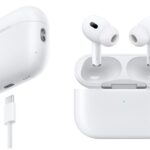Smartphones are an essential part of our lives, and understanding what makes them tick can help you make better choices. From performance specs to display technology, this guide will break down everything you need to know to find the perfect smartphone for your needs.

Smartphone Performance and Specifications
What Makes a Smartphone Truly High Performance?
High performance in a smartphone is about more than just having the latest specs. It involves a combination of:
- Processor Power: The chip or processor is the brain of the smartphone, handling everything from opening apps to running games.
- RAM: Random Access Memory (RAM) helps your phone multitask smoothly. More RAM means better performance when switching between apps.
- Storage: Faster storage speeds up your phone’s operation and affects how quickly apps open and data loads.
Tip: Look for a balanced combination of these factors rather than just focusing on one component.
How Processor, RAM, and Storage Work Together in Smartphones
Here’s how these components interact:
- Processor: Handles calculations and tasks, impacting the speed and responsiveness of your phone.
- RAM: Stores data temporarily, allowing you to switch between apps without lag.
- Storage: Where your apps, photos, and data are saved. Faster storage improves load times.
Tip: A high-end processor with limited RAM and slow storage won’t perform well. Ensure all components are up to par.
Why Snapdragon 8 Gen 2 and 3 Chips Don’t Always Mean Flagship Performance
While Snapdragon 8 Gen 2 and 3 chips are powerful, they don’t guarantee top performance. Other factors include:
- Optimization: How well the chip is integrated with the phone’s software.
- Thermal Management: How the phone manages heat, which can affect performance.
- Other Hardware: The quality of RAM, storage, and cooling systems.
Tip: Check benchmarks and real-world performance reviews to get a complete picture of a phone’s capabilities.
Best Processors for Smartphones in 2024
In 2024, some of the best processors include:
- Snapdragon 8 Gen 3: Offers top-tier performance for gaming and multitasking.
- Apple A17 Bionic: Known for its speed and efficiency, especially in iPhones.
- Exynos 2400: Samsung’s latest chip, providing great performance for Galaxy devices.
Tip: Choose a processor based on your needs, whether for gaming, photography, or general use.
How to Evaluate Smartphone Performance Beyond Just the Processor
Beyond the processor, consider:
- RAM: More RAM can improve multitasking and performance.
- Battery Health: A healthy battery ensures consistent performance over time.
- Software Optimization: A well-optimized OS can enhance performance regardless of hardware.
Tip: Look at user reviews and performance benchmarks to gauge overall performance.
Understanding the Role of RAM in Smartphone Speed and Efficiency
RAM plays a crucial role in speed and efficiency:
- Multitasking: More RAM allows for smoother multitasking and faster app switching.
- Performance: It helps with running apps and games without slowdowns.
- Future-Proofing: More RAM can help your phone stay relevant as apps become more demanding.
Tip: For most users, 8GB of RAM is sufficient. Opt for more if you plan to use demanding applications.
Internal Storage Types and Their Impact on Smartphone Performance
Different types of storage affect performance:
- UFS 3.1: Provides fast read and write speeds, improving app load times and system performance.
- eMMC: Slower compared to UFS, found in lower-end devices.
Tip: Choose a phone with UFS 3.1 storage for better performance and faster data access.
Choosing Between Different Chipsets: MediaTek vs Snapdragon
MediaTek and Snapdragon chipsets have their strengths:
- Snapdragon: Known for high performance and efficiency, often found in flagship phones.
- MediaTek: Offers good performance at a lower cost, often used in mid-range devices.
Tip: Choose based on your budget and performance needs. Snapdragon is typically better for high-end performance.
Is 12GB RAM Overkill for Smartphones? Pros and Cons
12GB of RAM can be overkill for many users:
- Pros: Provides excellent multitasking capabilities and future-proofs your device.
- Cons: May not be necessary for everyday tasks, and higher RAM often comes with a higher price tag.
Tip: 8GB is usually sufficient for most users. Go for 12GB if you need the extra performance for demanding tasks.
How Battery Health Affects Overall Smartphone Performance
Battery health impacts performance:
- Performance Throttling: Older batteries can cause the phone to throttle performance to prevent overheating.
- Battery Life: A healthy battery provides consistent power, helping maintain performance levels.
Tip: Regularly check your battery’s health and consider replacing it if performance drops.
Display Technology and User Preferences
OLED vs LCD Displays in Smartphones: What’s the Difference?
OLED and LCD have distinct differences:
- OLED: Offers vibrant colors, deeper blacks, and better contrast. Each pixel emits its own light.
- LCD: Uses a backlight and offers good color accuracy, but blacks may not be as deep.
Tip: OLED displays are generally better for vibrant colors and contrast, while LCDs are often more affordable.
Understanding Display Brightness: Peak Nits vs High Brightness Mode
- Peak Nits: The maximum brightness a screen can reach. Higher nits mean better visibility in direct sunlight.
- High Brightness Mode: A feature that temporarily increases brightness for better visibility.
Tip: Higher peak nits are better for outdoor use. High brightness mode can be useful but may drain the battery faster.
The Pros and Cons of Curved Displays in Smartphones
Curved displays have their benefits and drawbacks:
- Pros: Aesthetic appeal, immersive viewing experience, and easier access to edge features.
- Cons: More prone to accidental touches, and screen protectors can be tricky to apply.
Tip: If you like the look of a curved screen, go for it, but be aware of the potential issues with handling and protection.
Flat vs Curved Displays: Which is Better for Everyday Use?
Flat displays tend to be more practical:
- Flat Displays: Easier to protect with screen protectors, less prone to accidental touches.
- Curved Displays: Offer a unique design and can feel more immersive.
Tip: For everyday use and ease of protection, flat displays are often preferred.
How Refresh Rates Affect User Experience in Smartphones
Refresh rates determine how smooth the screen feels:
- 60Hz: Standard refresh rate, sufficient for basic use.
- 120Hz: Offers smoother scrolling and a better overall experience, especially for gaming and animations.
Tip: A higher refresh rate enhances user experience, but it may impact battery life.
Best Smartphones with 120Hz Refresh Rate Displays in 2024
Some top choices include:
- Samsung Galaxy S24 Ultra: Known for its stunning display and smooth performance.
- iPhone 15 Pro: Features ProMotion technology with up to 120Hz refresh rate.
- OnePlus 12: Offers a high refresh rate display with smooth performance for gaming.
Tip: Look for phones with a 120Hz refresh rate if you prioritize smooth scrolling and gaming performance.
What is HDR in Smartphones and Is It Worth It?
HDR (High Dynamic Range) enhances video and photo quality:
- HDR10: A common standard that improves color and contrast in videos.
- Dolby Vision: A more advanced HDR format with better color accuracy and brightness.
Tip: HDR can enhance media viewing, but its benefits depend on the content you consume.
How to Choose the Right Display Size for Your Smartphone
Display size impacts usability:
- Small Displays (Under 6 inches): Easier to handle and pocket.
- Medium Displays (6 to 6.7 inches): Balance between usability and screen space.
- Large Displays (Over 6.7 inches): Ideal for media consumption but can be cumbersome.
Tip: Choose a display size based on your preferences for handling, media consumption, and portability.
AMOLED vs Super AMOLED Displays: Which One is Better?
AMOLED and Super AMOLED are both excellent:
- AMOLED: Offers vibrant colors and deep blacks by using individual light-emitting diodes.
- Super AMOLED: An enhanced version with better color accuracy, brightness, and reduced glare.
Tip: Super AMOLED displays provide a better overall experience due to their enhanced technology.
Understanding Color Accuracy and Depth in Smartphone Displays
Color accuracy and depth are key to a great display:
- Color Accuracy: How true the colors are to real life. Higher accuracy means better photo and video quality.
- Color Depth: Refers to the number of colors a display can show. Higher color depth means richer images.
Tip: For the best visual experience, choose a display with high color accuracy and depth.
Conclusion
Understanding smartphone performance and display technology helps you make informed decisions. Whether you’re looking for the best performance or the most vibrant display, knowing what to look for will ensure you get a device that fits your needs perfectly. If you prioritize high performance, pay attention to
the processor, RAM, and storage. For the best display, consider OLED vs LCD, refresh rates, and HDR capabilities. With these insights, you’re well-equipped to choose the right smartphone for your lifestyle.













